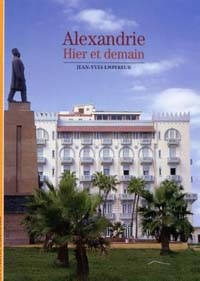- Alexandrie Hier et demain
- Jean-Yves Empereur
Published by : Gallimard - Collection : Découvertes Gallimard, Culture et Société 2001

In 1857, Herman Melville wrote that Alexandria seemed to be paved with the pulverised ruins of a thousand cities. Each yard of earth turned and turned again. The soil, a rich humus, appears historic. Every vision of Alexandria is informed by a procession of symbolic images : the Pharos, the Library, Antony and Cleopatra, Cavafy and Durrell, memories of its radiant influence and past splendour. Born some 2300 years ago of the will of Alexander the Great, elevated to the rank of capital by the Ptolemies, a crossroads of meetings and exchange between West and East, Alexandria is today the biggest city of the Mediterranean. But the town has seen its fair share of misfortune, almost abandonment. Thus, in 1789, the proud city was no more than a shadow of its former self and could scarcely count 15000 inhabitants. From 1820, under the rule of Mohamed Ali, it rose again and welcomed all communities, all religions and all languages in a model of cosmopolitan living that many still remember with nostalgia. Jean-Yves Empereur, archaeologist and Alexandrian at heart, has lived through the rebirth of the town. Here he stands witness to its continuing sense of the universal.
- Saad Zaghloul Square (1860-1927)